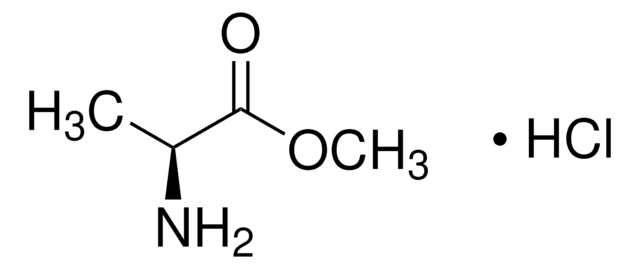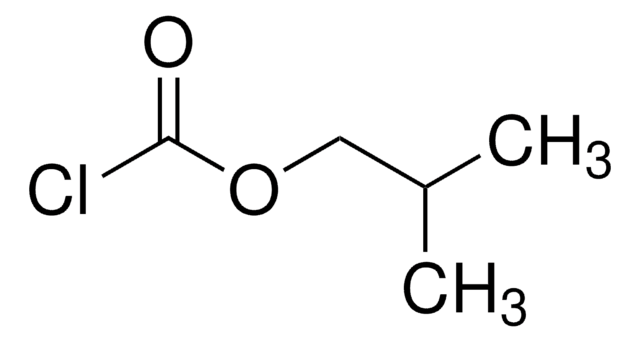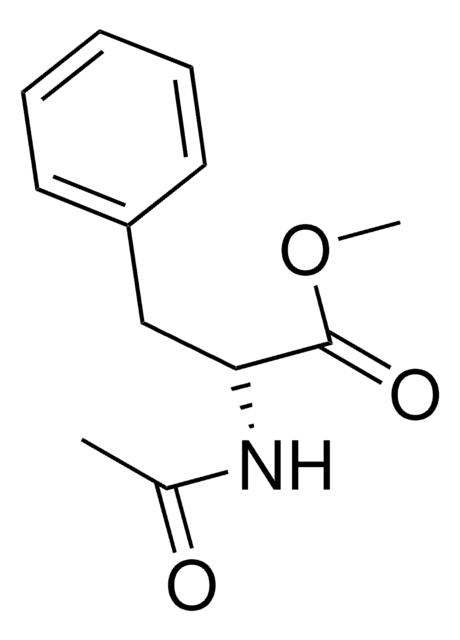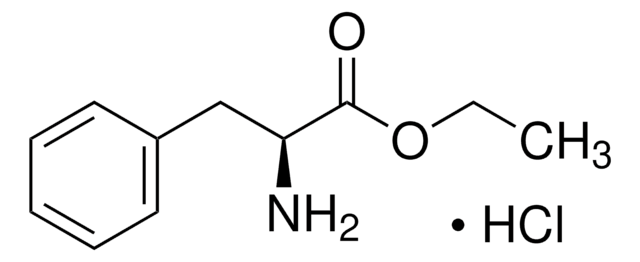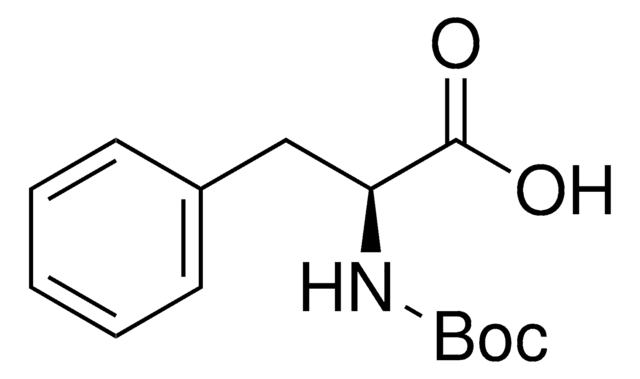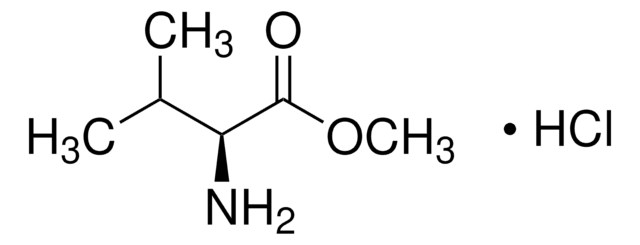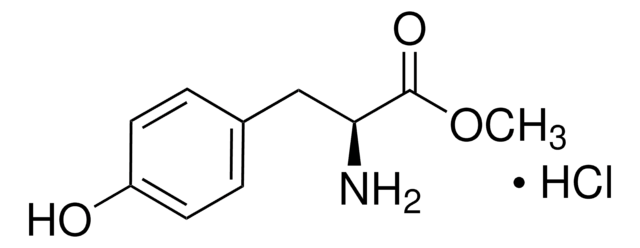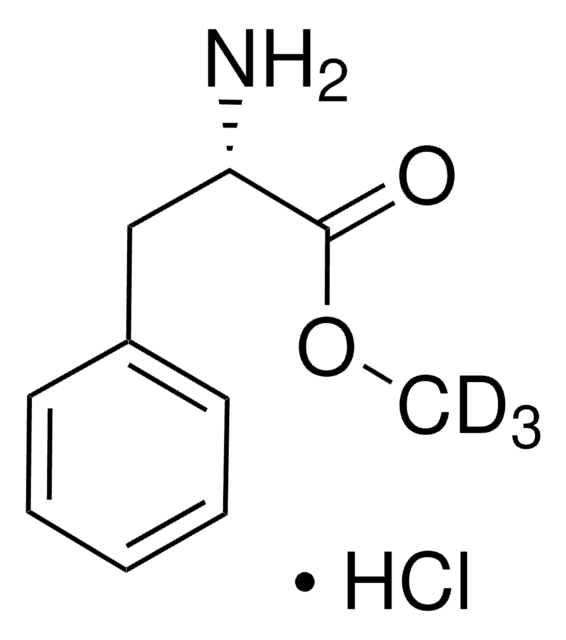P17202
L-Phenylalanine methyl ester hydrochloride
98%, for peptide synthesis
Sinónimos:
(2S)-2-Amino-3-phenylpropionic acid methyl ester hydrochloride, Methyl L-phenylalaninate hydrochloride
About This Item
Productos recomendados
product name
L-Phenylalanine methyl ester hydrochloride, 98%
Nivel de calidad
Análisis
98%
formulario
powder or crystals
actividad óptica
[α]20/D +32.4°, c = 2 in ethanol
idoneidad de la reacción
reaction type: solution phase peptide synthesis
color
white
mp
158-162 °C (lit.)
cadena SMILES
Cl.COC(=O)[C@@H](N)Cc1ccccc1
InChI
1S/C10H13NO2.ClH/c1-13-10(12)9(11)7-8-5-3-2-4-6-8;/h2-6,9H,7,11H2,1H3;1H/t9-;/m0./s1
Clave InChI
SWVMLNPDTIFDDY-FVGYRXGTSA-N
¿Está buscando productos similares? Visita Guía de comparación de productos
Código de clase de almacenamiento
11 - Combustible Solids
Clase de riesgo para el agua (WGK)
WGK 3
Punto de inflamabilidad (°F)
Not applicable
Punto de inflamabilidad (°C)
Not applicable
Equipo de protección personal
Eyeshields, Gloves, type N95 (US)
Elija entre una de las versiones más recientes:
¿Ya tiene este producto?
Encuentre la documentación para los productos que ha comprado recientemente en la Biblioteca de documentos.
Los clientes también vieron
Nuestro equipo de científicos tiene experiencia en todas las áreas de investigación: Ciencias de la vida, Ciencia de los materiales, Síntesis química, Cromatografía, Analítica y muchas otras.
Póngase en contacto con el Servicio técnico